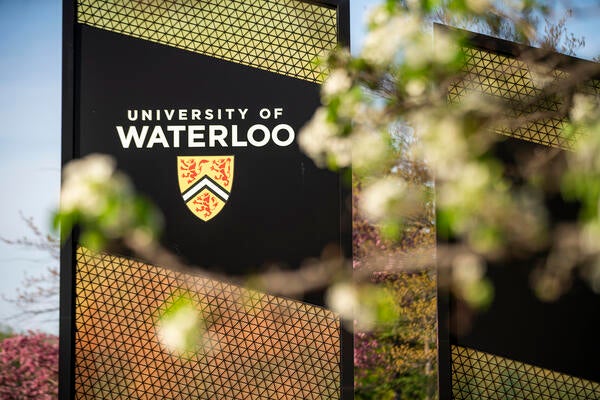
Playing with fire
Waterloo researcher hopes crews can use game theory to battle forest fires. Agencies across Canada can be viewed as participants in a game, says prof.

Waterloo researcher hopes crews can use game theory to battle forest fires. Agencies across Canada can be viewed as participants in a game, says prof.
By Christian Aagaard Communications and Public AffairsGame theory applied by a University of Waterloo researcher could help crews battle raging forest fires in Canada.

“Forest fires are inherently unpredictable,” says Kate Larson, associate professor at the David R. Cheriton School of Computer Science. “You get situations where the (individual) provinces don’t have the resources to fight these fires. In times of need, they share.
“They commit these people for up to three weeks, but they can’t forecast fires out that far.”
Last year, Larson and graduate student Alan Tsang conducted interviews across the country to understand how the provincial forest-firefighting agencies support each other through the Canadian Interagency Forest Fire Centre (CIFFC) in Winnipeg. The work was done with Rob McAlpine of the Ontario Ministry of Natural Resources.
Game theory expresses strategy as a mathematical process. Variables can be valued and changed, enabling researchers to come up with simulations that add numerical logic to decision-making.
Tough choices
The Waterloo study looked at firefighting agencies as participants in a game.
Each has the capacity to make decisions; each has equipment and firefighters, and each faces such constraints as fire conditions in their own areas and the risk of tiring-out their own crews.
When a “distressed agency” appeals through the CIFFC, the other agencies look at their resources and “bid” to help. The CIFFC uses this information in order to determine how resources should be allocated to the agency in need.
Turning the elements of mutual aid into mathematical equations zeroes in on a key issue: When can an agency provide help, and how much can it give?
“It’s game theory applied in a real-world situation, and it’s an interesting problem because of the high degree of risk and uncertainty these agencies work under,” says Larson. “How do you make the decisions to lend resources or not, and what are the issues for making those decisions?”
Larson’s research also studies how computers and programs might some day “negotiate” tasks and form agreements among themselves, through game theory and artificial intelligence.
Not to worry, Larson says: People aren’t about to surrender sweeping reasoning powers to digital authorities.
“There is still a gap between what is possible -- what we dream about -- and what we can do, that I wouldn’t be particularly concerned.”

Read more
Here are the people and events behind some of this year’s most compelling Waterloo stories

Read more
Meet five exceptional Waterloo graduate students crossing the convocation stage as Class of 2025 valedictorians

Read more
$1 million initiative to establish Research Chair and enhance student AI tool experimentation
The University of Waterloo acknowledges that much of our work takes place on the traditional territory of the Neutral, Anishinaabeg, and Haudenosaunee peoples. Our main campus is situated on the Haldimand Tract, the land granted to the Six Nations that includes six miles on each side of the Grand River. Our active work toward reconciliation takes place across our campuses through research, learning, teaching, and community building, and is co-ordinated within the Office of Indigenous Relations.